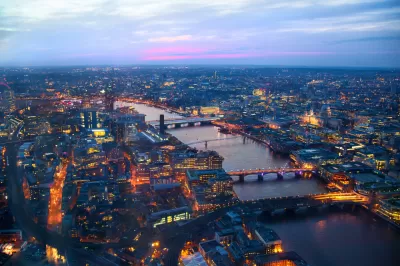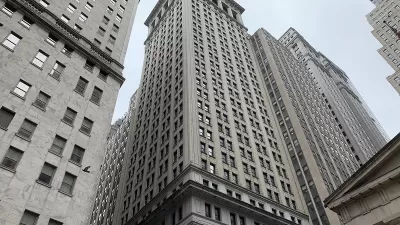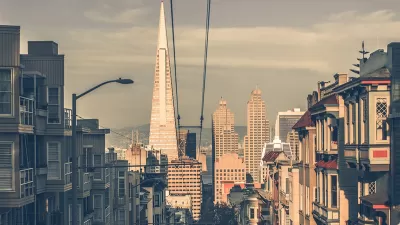Major cities like London continue their rebound from the pandemic, with some tweaks.

Despite the predicted emptying out of major cities during the pandemic, Richard Florida writes that "cities are back," with few showing more promise than London.
The Pret Index, a proxy London foot-traffic measurement based on transactions at the sandwich chain across the city, has even surpassed its pre-Covid baseline in the West End. Restaurant reservations on OpenTable are at 89 per cent of pre--pandemic levels. In January, house prices in the capital grew at their fastest rate since 2016, and rents are back to where they were before Covid. Estate agents report large numbers of clients who fled London now seeking to return.
In Florida's opinion, "true great cities" throughout history almost always rebound after disastrous wars, pandemics, or other disruptions, and London is no different. But "[w]ith remote-working expected to take up at least one in five working days even after the pandemic is over, the commercial heart of the city is going to feel very different."
Like other cities, London faces the question of what to do with its half-vacant office buildings. "But a city is not reducible to its offices. Great cities are adaptive: they remake and reuse their buildings and built environment as circumstances change."
Now, cities are returning to an older, more mixed-use form of urban design. "The city itself is transforming into an extended version of the office, as more work takes place in cafés, bars and hotel lobbies. London has been at the forefront of this shift, incubating an array of co-working spaces." Whether or not they're traveling to an office, Florida argues, workers will continue to spend time in vibrant city centers "to meet, share ideas and do business."
FULL STORY: Covid has changed London for the better

Study: Maui’s Plan to Convert Vacation Rentals to Long-Term Housing Could Cause Nearly $1 Billion Economic Loss
The plan would reduce visitor accommodation by 25,% resulting in 1,900 jobs lost.

North Texas Transit Leaders Tout Benefits of TOD for Growing Region
At a summit focused on transit-oriented development, policymakers discussed how North Texas’ expanded light rail system can serve as a tool for economic growth.

Why Should We Subsidize Public Transportation?
Many public transit agencies face financial stress due to rising costs, declining fare revenue, and declining subsidies. Transit advocates must provide a strong business case for increasing public transit funding.

How to Make US Trains Faster
Changes to boarding platforms and a switch to electric trains could improve U.S. passenger rail service without the added cost of high-speed rail.

Columbia’s Revitalized ‘Loop’ Is a Hub for Local Entrepreneurs
A focus on small businesses is helping a commercial corridor in Columbia, Missouri thrive.

Invasive Insect Threatens Minnesota’s Ash Forests
The Emerald Ash Borer is a rapidly spreading invasive pest threatening Minnesota’s ash trees, and homeowners are encouraged to plant diverse replacement species, avoid moving ash firewood, and monitor for signs of infestation.
Urban Design for Planners 1: Software Tools
This six-course series explores essential urban design concepts using open source software and equips planners with the tools they need to participate fully in the urban design process.
Planning for Universal Design
Learn the tools for implementing Universal Design in planning regulations.
Ascent Environmental
Borough of Carlisle
Institute for Housing and Urban Development Studies (IHS)
City of Grandview
Harvard GSD Executive Education
Toledo-Lucas County Plan Commissions
Salt Lake City
NYU Wagner Graduate School of Public Service





























